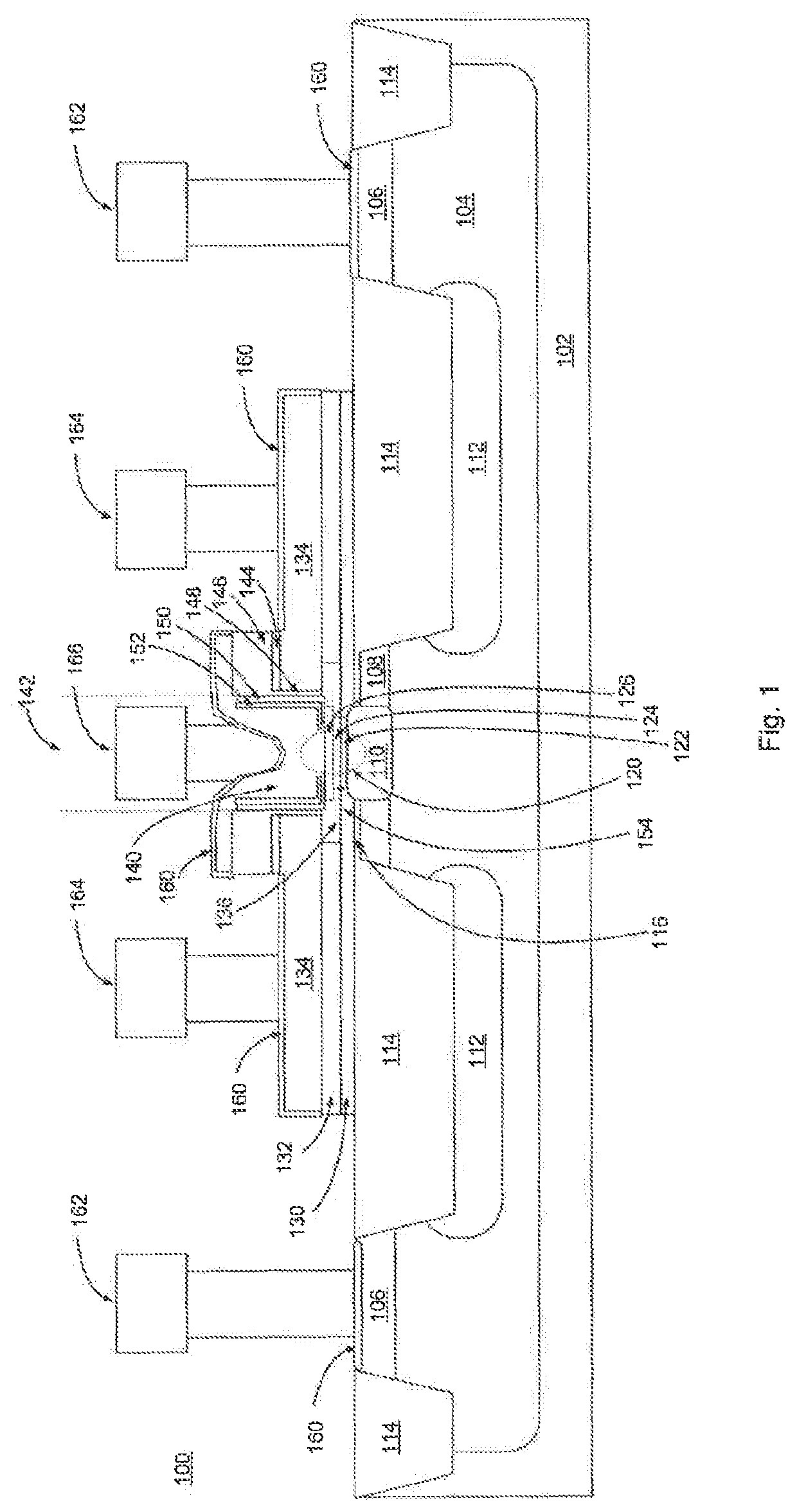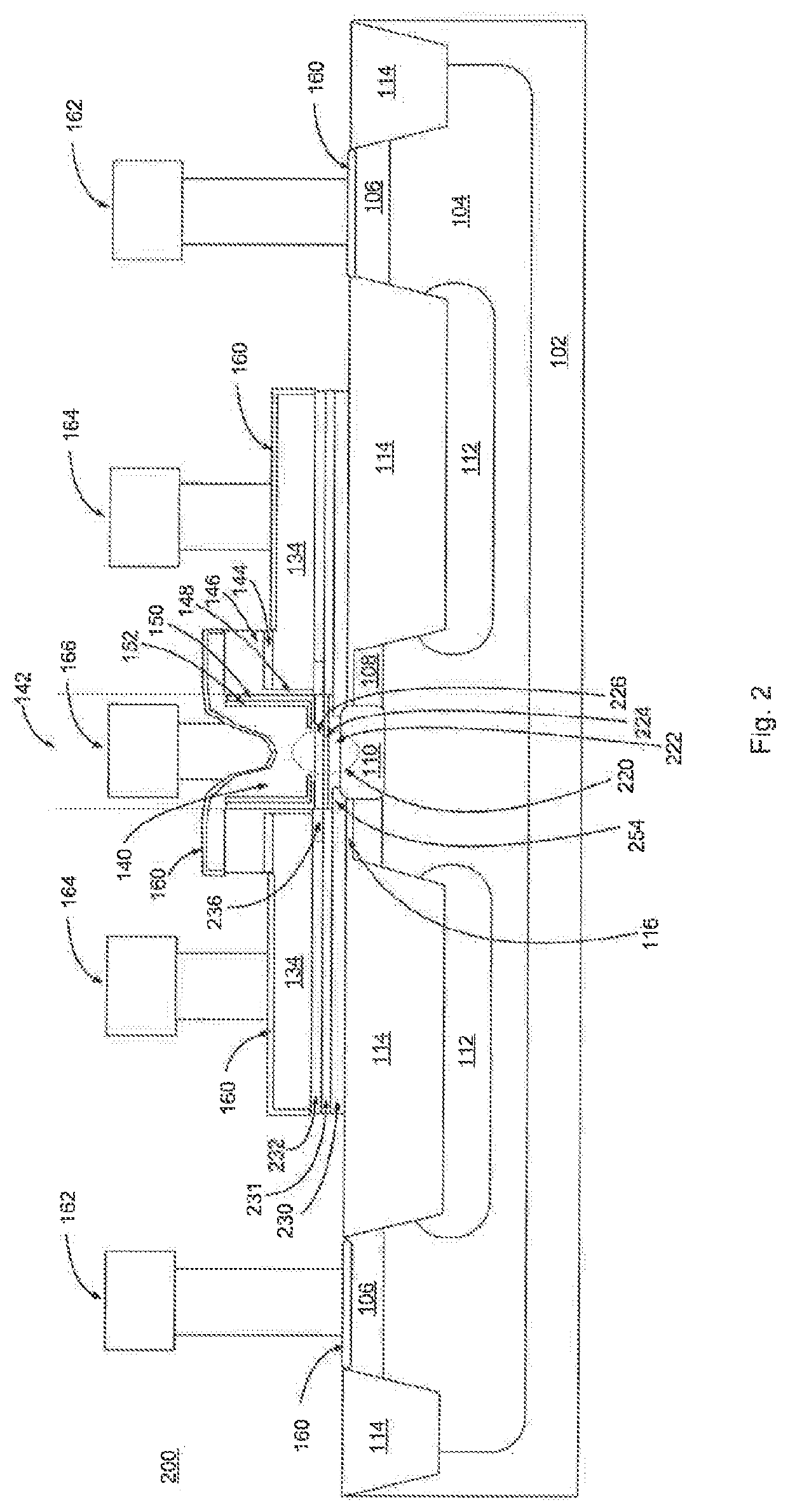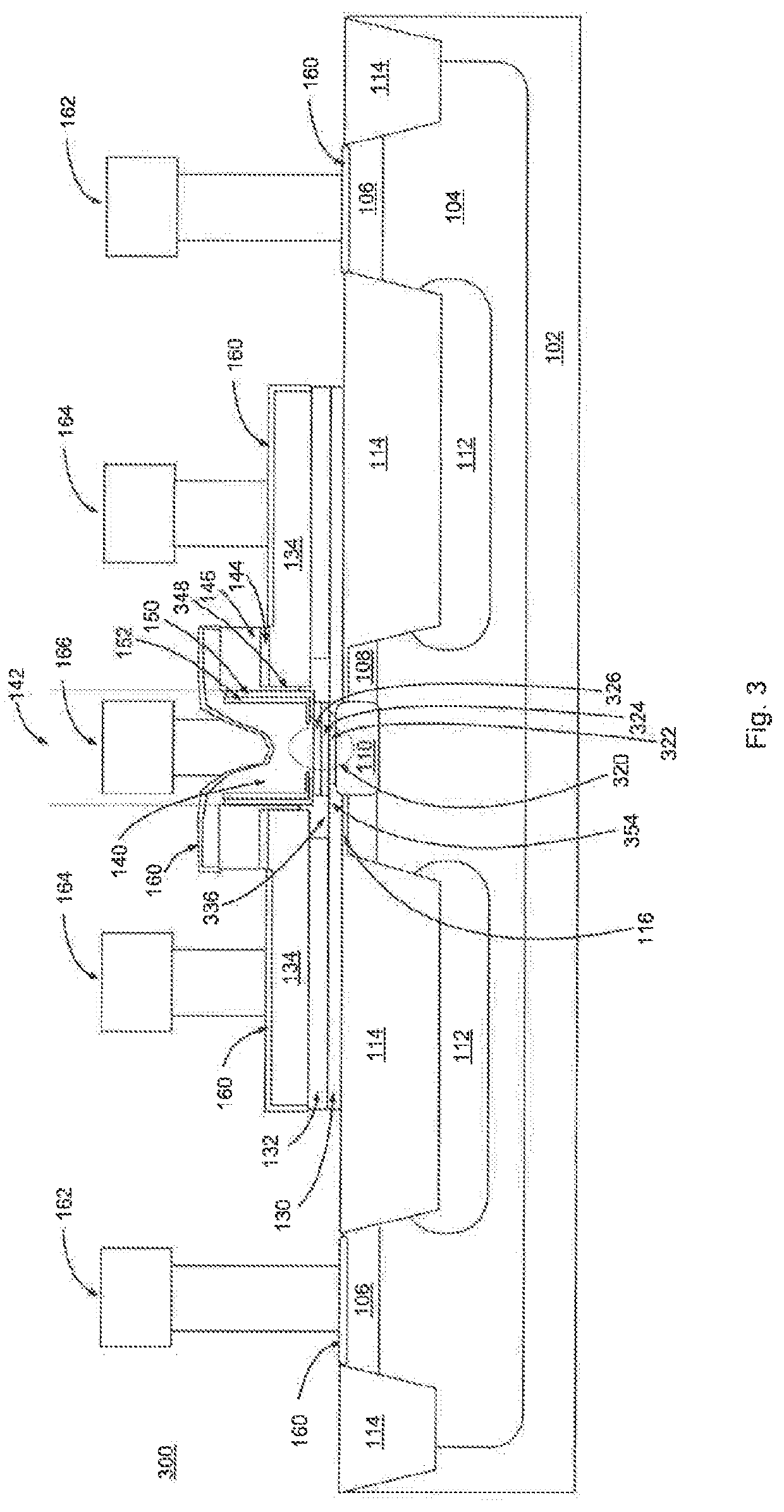Semiconductor device and method of manufacturing a semiconductor device
a semiconductor device and semiconductor technology, applied in the field of semiconductor devices and manufacturing methods, can solve the problems of trade-off between these two parasitic components, and achieve the effects of reducing the parasitic junction capacitance, reducing the collector-base capacitance, and increasing the maximum oscillation frequency of the semiconductor devi
- Summary
- Abstract
- Description
- Claims
- Application Information
AI Technical Summary
Benefits of technology
Problems solved by technology
Method used
Image
Examples
first embodiment
[0061]FIG. 1 shows a schematic cross-sectional view of a semiconductor device 100 according to the present invention. In this embodiment, semiconductor device 100 is in the form of a selective-epi base silicon germanium (SiGe) npn heterojunction bipolar transistor (HBT). However, this is not intended to be limiting and persons skilled in the art will understand that, by appropriate substitution of semiconductor regions of opposite conductivity type and / or use of silicon or other semiconductor materials, pnp and other types of semiconductor devices can be provided in accordance with the present invention, on silicon or other semiconductor substrates. The cross-section of the semiconductor device 100 illustrated in FIG. 1 is symmetric about a central vertical line, and accordingly some elements are labelled on only one side of the cross-section in order to improve clarity.
[0062]Semiconductor device 100 comprises a substrate 102, in the form of a p−-doped silicon substrate, in which co...
second embodiment
[0070]FIG. 2 shows a schematic cross-sectional view of a semiconductor device 200, in the form of a selective-epi base silicon germanium (SiGe) npn heterojunction bipolar transistor (HBT), according to the invention. Elements shown in FIG. 2 which correspond to elements described above with reference to FIG. 1 are indicated by the same reference numbers (where the elements are substantially the same), or by reference numbers increased by 100 (where the elements may differ). Semiconductor device 200 differs from semiconductor device 100 in that it includes a conductive layer 231 in the form of a further polysilicon layer 231 between the lower dielectric layer 230 and the upper dielectric layer 232. The base link region 236 extends between the extrinsic base region 134 and the conductive layer 231, and couples the intrinsic base region 224 to the extrinsic base region 134 via the conductive layer 231.
third embodiment
[0071]FIG. 3 shows a schematic cross-sectional view of a semiconductor device 300, in the form of a selective-epi base silicon germanium (SiGe) npn heterojunction bipolar transistor (HBT), according to the invention. Elements shown in FIG. 3 which correspond to elements described above with reference to FIGS. 1 and 2 are indicated by the same reference numbers. Semiconductor device 300 differs from semiconductor device 100 of FIG. 1 in that the base link region 336, which electrically couples the extrinsic base region 134 to the intrinsic base region 324, is grown from both the lower surface and the sidewall of the extrinsic base region 134.
PUM
| Property | Measurement | Unit |
|---|---|---|
| oscillation frequencies | aaaaa | aaaaa |
| dielectric | aaaaa | aaaaa |
| etch rates | aaaaa | aaaaa |
Abstract
Description
Claims
Application Information
 Login to View More
Login to View More - R&D
- Intellectual Property
- Life Sciences
- Materials
- Tech Scout
- Unparalleled Data Quality
- Higher Quality Content
- 60% Fewer Hallucinations
Browse by: Latest US Patents, China's latest patents, Technical Efficacy Thesaurus, Application Domain, Technology Topic, Popular Technical Reports.
© 2025 PatSnap. All rights reserved.Legal|Privacy policy|Modern Slavery Act Transparency Statement|Sitemap|About US| Contact US: help@patsnap.com



